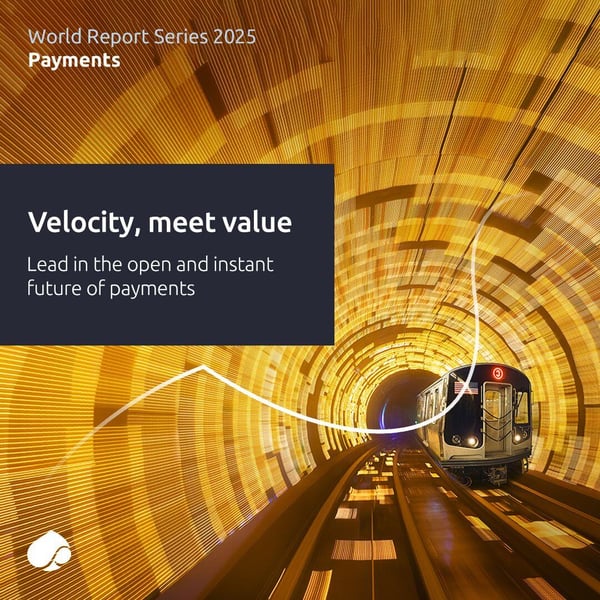On one of the quieter rainy summer days I got the clean-up bug. Time to empty the attic and say goodbye to old files, stuff really. The mobile shredder service was ordered, and boxes hailed down a number of very steep Dutch stairs. Physical exercise combined with a mental clearing out is a great way to reset during the holiday.
I came across the conference papers of a large E-banking conference organised by Dagens Industri in 2000 in the Nordics (where else) for which I had been involved in making the presentation by S1 Corporation (the founders of the world’s first internet bank Security First Network Bank) on ‘Delivering the promise of virtual finance.’ Leafing through that folder (yes, paper) was incredible fun and very insightful. On the agenda 19 years ago: The network economy and financial institutions, Threats and Opportunities in the New Economy, etc.
As always looking back at the facts and forecasts presented at the conference, we got a lot wrong. “In 2005 we will have 350 million internet users globally” turned out to be around 1 billion, three times more. And the 1 million mobile phone users by 2005, were double the number in fact too.
More observations when looking at the words used: virtual finance became internet banking, e-banking and so on. In fact, on one of the slides I even saw the word API in connection to building a middleware layer in the call centre architecture.
What really caught my attention though was this quote of 2000 that can be catapulted into 2019 without a single change. Gert Engman, then working at what we now know as Swedbank stated: “We have everything that the new players would love to have, but we have to act fast in order not to be run over”.
Hold that thought! Act fast in order not to be run over….
Fast forward to 2019 and we see the same issue recur time and time again. The Economist wrote in May this year about ‘the tech raid on banking’: “Banking is late to the smartphone age because entrepreneurs have been put off by regulations. And, since the financial crisis, Western banks have been preoccupied with repairing their balance-sheets and old-fashioned cost-cutting. Late is better than never, however.”
So by now we can agree that banks – and we as their clients - have two major issues to deal with: the raiders and timing.
Fighting off the raiders – BE the platform
The Financial Times supercharged the more balanced Economist article this month, and their ‘Silicon Valley is eating the banks’ lunch’ was quickly and correctly rebuked by Forbes’ contributor Ron Shevlin with ‘Silicon Valley is eating the crumbs from the banks’ lunch’. He is right. So far the ‘raiders’ are merely putting a slight dent in the market share. However, we do not have another 19 years to move from ‘Act fast not to be run over’ to ‘Better late than never’.
Banks now have the ultimate opportunity through what my business companion Mark Hartley calls ‘The law of unintended consequences’. Rather than opening the gold pit to the new contenders, banks can be the winning core orchestrator of financial life by not sending their customers out wandering through a jungle of apps (their own Appstore) but by offering them what they need and want through the bank channel of their choice – the one they know and like.
This requires banks to think beyond open and to embark on a complete API enablement of their core systems and expose as much data and as many APIs as is possible. Banks’ IT departments should be tasked to concentrate on the inside-out whilst delivering the obvious needs of compliance, resilience and availability.
In doing so they will pave the way for long term beneficial partnerships with technology companies who can concentrate on providing the outside-in services. Such a model presents a win-win. The technology company can leverage the Banks API systems, whilst utilising their regulatory status, but most important of all get access to the banks’ millions of customers. The bank can create tantalisingly relevant offers with this data without having to do all the integration and development themselves. In other words, the bank is the distribution platform with a relevant cockpit put in the hands of their (business) customers.
Timing
The timing issue has many faces. Time to market, time it takes to turn a vision into strategy, time to turn the bank around, time to learn to work with partners, time to fight off the competition, time – read timing – is everything. Let’s focus on one core issue that banks can actually influence themselves.
Banks can control time to market, time to fight off competition, time to learn to work with partners, by a huge degree by opting for new technology and a new architecture. Integrating into the core is not only not always possible, it is also not always relevant. Bring your partners and app developers together and expose them through your bank channel of your customers’ choice.
It is for example, very hard for banks to recruit developers who literally ‘play’ with the latest technology. Tech companies and start-ups are able to attract that type of talent. Working with the right partners with the right technology that scales, is elastic up and down and easy to model does cut time to market in more than one way. Moreover, by choosing to go this way, the bank effectively creates an R&D pool of technology partners where the risk and cost is transferred from the bank’s balance sheet to the balance sheet of the technology companies, and, at the same time the time and cost of deploying truly new tech has been slashed to much lower levels. Investing in a fintech partner you deploy inhouse as well thus becomes a double whammy in terms of investment.
You can be the bank that gets it. The platform, the core, not the pipe. By doing so you might well join the ‘handful of banks that get it’, covered in Chris Skinner’s next book!
See you at Sibos 2019 – Discover Zone 37A
Up next…
Explore how you can monetise your Open Banking infrastructure for and with your business customers in our next blog…
.png)

.png?width=600&name=Rectangle%20316%20(3).png)
.png?width=600&name=Webinar%20assets%20(1).png)

